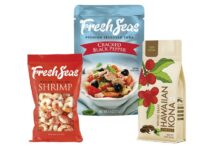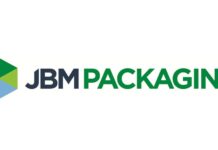The market size of biodegradable packaging materials across Europe reached almost $2.94 billion last year. The predictions suggest that it is anticipated to surpass $5.5 billion by 2032. The growth is projected to happen in a steady way, with a CAGR of 6.4% from 2022 through 2032.
The growth of the European biodegradable packaging market is fuelled by the rising usage of biodegradable packaging across varied industries like food and packaging, consumer goods, and pharmaceuticals. Moreover, the market is experiencing development throughout the evaluation period due to the increasing popularity of biodegradable packaging, specifically in the form of bags and boxes.
Biodegradable packaging market experiencing significant surge in Europe-
The demand for European biodegradable packaging materials is experiencing a prominent rise of 1.3 times. The growth of sustainable packaging can be primarily caused by a few factors. One is the growing awareness of the negative impact when it comes to plastic as well as other harmful packaging materials. A further contributor is the growing demand for sustainable packaging in sectors such as food and beverages as well as pharmaceuticals.
The market is anticipated to experience significant growth in the forecast period of 2022-2032, with an anticipated rate of expansion of 1.7 times. The expected growth in this industry is being supported by several factors, such as a growing emphasis on sustainability, efforts to reduce the impact on the environment, raised consumer awareness, government limits on the use of plastic, and an increasing emphasis on developing better and more efficient packaging options.
Manufacturers, when it comes to biodegradable packaging materials, are implementing marketing strategies that encourage environmentally friendly procedures, aiming to grow their market share. One of the pioneering startups in the UAE has discovered a creative method so as to make use of the abundant palm leaf assets found locally. They have successfully transformed unwelcome palm fibres into recyclable materials and have used them in food packaging. The process involves taking away fibres from palm tree leaves, which then get mixed with water and latex. Afterward, the mixture is dried, moulded, as well as coated with latex to produce packaging materials.
Based on one of the projections, the market is anticipated to experience a CAGR of 6.4% between 2022 and 2032, which is substantially greater than the 5.8% CAGR that was observed between 2017 and 2021.
Consumer pressure and the Attenborough Effect on driving growth across the European market-
It is well worth noting that millennials are increasingly becoming aware of the negative environmental impacts linked to the use of plastic. As a result, they are increasingly choosing packaging materials that focus on environmental sustainability. Their dedication to sustainability is so huge that they are willing to make investments in environmentally friendly choices, even if they are pricier.
The Attenborough Effect, a tribute to the renowned David Attenborough, has an important effect on driving market growth. David Attenborough has made significant contributions to public education about the negative effects of plastic application and the importance of sustainability, resulting in a lasting impact. Based on data from the Global Web Index, over 52% of consumers in the United States and the United Kingdom have gone on to consciously decrease their adoption of single-use plastics. Additionally, 42% of these consumers view sustainable packaging as an important consideration when making decisions about their purchases. All these trends can be assigned to the Attenborough Effect. It is expected that these combined factors will significantly increase the consumption of biodegradable packaging materials in the market by a factor of 1.2x.
The following key companies have been profiled:
– Amcor Plc.
– Smurfit Kappa
– Sealed Air
– International Paper
– Mondi Group PLC
– WestRock Company
– Tetra Pak International S.A
– DS Smith
– Kruger Inc.
– Toray Plastics Inc.
Emergence of prohibition of plastics and stringent environmental regulations as a prominent market trend-
The growing public concern when it comes to environmental issues, along with the enforcement of rigorous environmental laws and the progress made in research and development by major companies in the bioplastics manufacturing industry, are anticipated to generate numerous possibilities for progress across Europe.
The European Union has recently gone on to implement a stringent resolution with the objective of significantly reducing the use of slim plastic bags across the region. The upcoming years are expected to bring major benefits for producers of biodegradable plastics and paper.
Moreover, a reduction in the usage of conventional plastic bags will likely promote the adoption of biodegradable plastic bags across shopping malls, retail stores, and other forms of loose packaging.



























